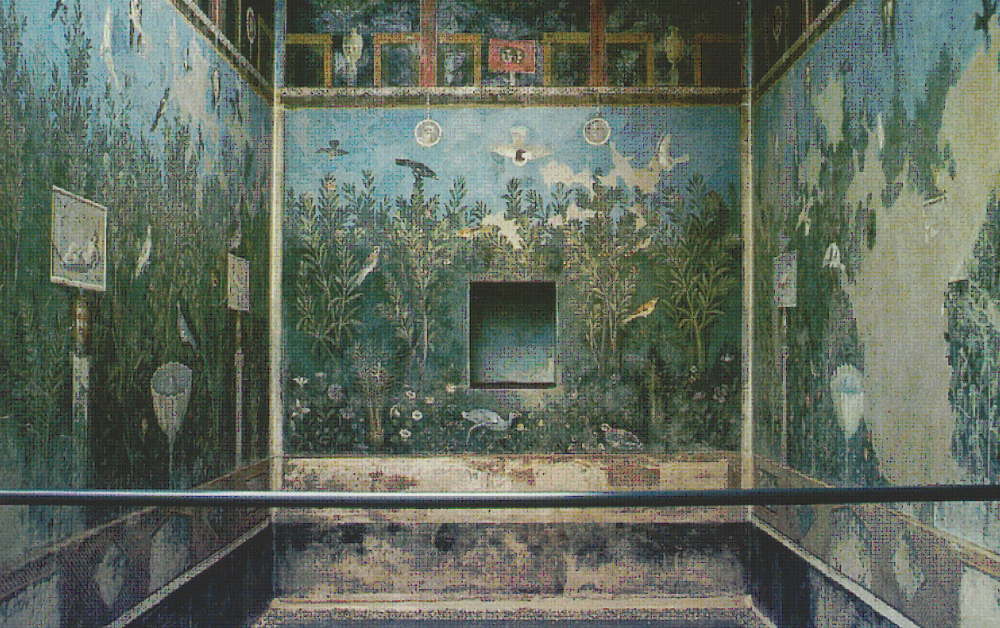This Ph.D. project focusses on various genres of landscape depiction in late republican and early imperial Roman wall painting (and other pictorial media) with an emphasis on representations of gardens.
Research
Since research in this field has been widely dominated by text-hermeneutical approaches, thereby explaining content and function of the depictions in accordance with ancient literary sources, this research project demonstrates the development and design of landscape and garden pictures in accordance and interconnection with their architectural context and the different types of spectatorship facilitated in the mix.

Casa del Bracciale d’Oro, Pompeji VI 17,42, Gartentriclinium (b), garden illustration with Dionysian motives | Source: B. Andreae, Am Birnbaum. Gärten und Parks im antiken Rom, in den Vesuvstädten und in Ostia (1996), Taf. 19,3.
Results
With fundamental changes in the architectural language of Roman houses and villas in the 2nd and 1st century BC, landscape vistas and garden spaces became a more and more important part of the dwellings of the upper Roman class. No wonder these changes resulted in a climax of these themes and subjects in pictorial art of the late republic and early imperial era.
As a necessity of this particular picture genre the pictures themselves are far more semantically open than one would expect, given the way in which they constantly challenged Roman viewers on very different levels, created mobility and movement through the Roman houses and villas as well as serving as felicitous sources for conversation.
The analysis puts an emphasis on certain topoi within these pictures which generally combine vegetation and architectural features and can be examined in different designs and topics over a period of 150 years. Within the pictures and the decorations in total, space can be cast as a narrative agent. In critical argument with research from art-history and archaeology the analysis demonstrates how painted landscapes and gardens show that the idea of space within a picture and beyond was dynamic in the least, thereby challenging Erwin Panofsky’s famous assumption that classical antiquity only thought of space as a container, in Aristoteles’ sense, and the application of perspective as a symbolic form.
Since the research of Roman wall painting has established useful patterns for collective symbolisms within the genre of mythological images, showing how certain images were altered and adjusted to the social fabric of the architectural context and the status of its owners, the same or at least similar mechanisms could be discovered for the landscape depictions. Their conceptual design, context and combination with other pictures and media are an essential element in the remarkable multimedia environments that the Roman culture created in the private sphere.
This Ph.D. thesis is being written within the program “Material Cultures and Object Studies” (MaCOS) of the Berlin Graduate School of Ancient Studies (BerGSAS).
